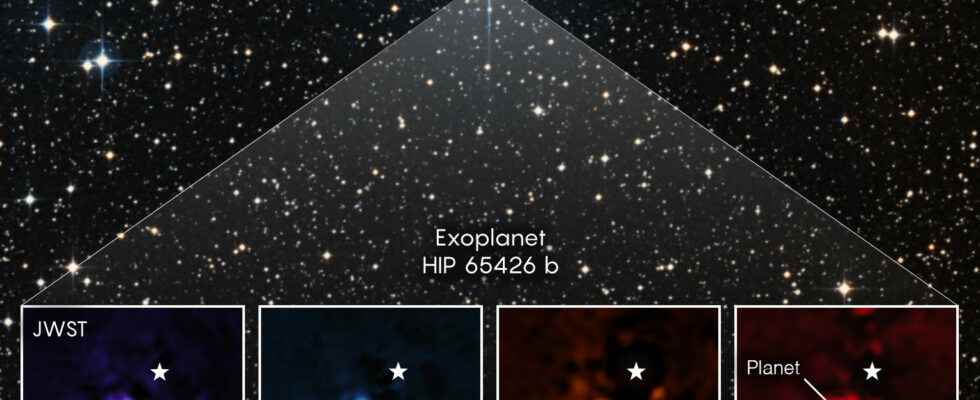A rare performance, the direct image of an exoplanet provides a lot of information. And even if it is a question here of a gaseous giant subjected to very high temperatures, it is a new witness of the performances of the james web telescope… and here, his coronagraphs, used to hide the star.
Even future improvements in measurement are to be expected.
Delivery of the James Webb!
Another first. Just two months after the official start of the scientific campaign of the James Webb Telescope, the news of the lesser “ early release makes as much noise in astrophysical laboratories as it does in the columns of the media. For when program officials announced that the results were better than expected, what they were saying in plain language was simple: virtually every telescope observation campaign will be a small revolution, whether in terms of photography or results. .
The observation of HIP 65426 is no exception, although it was not the star of this system that interested scientists, but its exoplanet known since 2017. It is a very young gaseous planet of 15 to Only 20 million years old and an impressive size between 6 and 12 times that of Jupiter. Thanks to its instruments equipped with coronagraphs, the James Webb telescope was able to literally hide the light from the star and thus store enough light to see the giant exoplanet directly.
It’s all in the technique
The image itself is not fundamentally revolutionary, especially since the Webb teams have accustomed the public to mind-blowing photographs of galaxies and star clusters in just a few weeks. The reconstruction (because it is not “a single snapshot”) is also less beautiful and clear than what the SPHERES instrument of ESO’s Very Large Telescope was able to produce, which was also able to photograph the same exoplanet. But it’s not about aesthetics, more about observation, techniques and frequency bands.
First, the coronagraphs were extremely precise in eliminating the light from the star (which is 10,000 times brighter than its exoplanet). Then, the coronagraphs not being everything, there remained a lot of “parasitic” light due to the very structure of the Webb… But its ability to observe over long windows while remaining extraordinarily stable makes it possible to eliminate these parasites in post-processing. Finally, direct infrared observation, thanks to the multiple instruments of the James Webb, opens a new window on the nature of these planets, their characterization and that of their atmosphere. The scientific team, in a pre-published article, estimates that it has measured 97% of the infrared spectrum reflected by the exoplanet.
There’s some under the hood
And that was just a case study. As Aarynn Carter, who led the image processing team, puts it, ” what’s most exciting is that we’ve only just begun. There are many other images of exoplanets which will arrive and which will reveal to us on reading their light, their physics, their chemistry, their formation. ” A promise…
Source : NASA

4